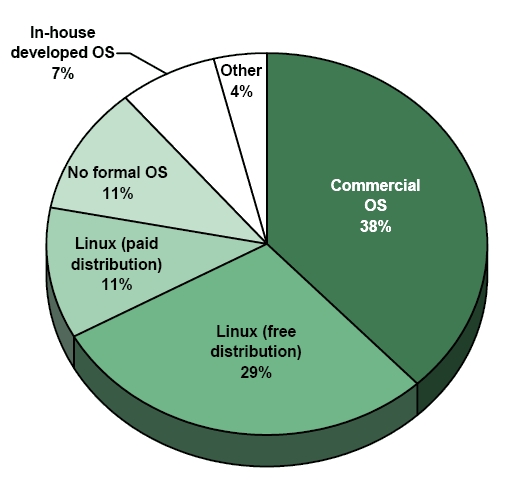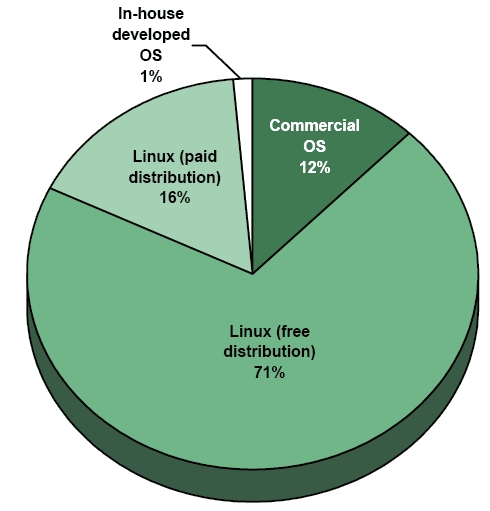Linux to remain a leading embedded OS, says analyst
Oct 9, 2007 — by LinuxDevices Staff — from the LinuxDevices Archive — 4 viewsA “significant portion” of development teams continue to use Linux as their primary embedded OS, a recent VDC survey finds. Additionally, the results suggest the trend will persist, “as the majority of current Linux users surveyed plan to use Linux again as their primary operating system on future [embedded] projects.”
digg this story |
According to VDC's report, key reasons why Linux remains “an attractive operating system choice for a range of embedded development teams” include:
- Royalty free run-time costs
- Advanced networking capabilities and technical features
- The large base of engineers familiar with the Linux OS
- And “many other factors”
These findings from VDC's latest “Linux in the Embedded Systems Market” research indicate that Linux will remain one of the leading embedded operating system choices “into the future,” VDC said.
Operating system used on previous embedded project by teams currently using embedded Linux (percent of respondents)
(Source: VDC)
Operating system planned for next embedded project by teams currently using embedded Linux (percent of respondents)
(Source: VDC)
Matt Volckmann, senior analyst and program manager for VDC's Embedded Software Practice, stated, “Linux has proven itself to be well suited for a wide range of applications across various industries, and continues to gain market share, despite not being particularly well matched for certain embedded applications types. Changes in the way that systems are designed will also allow Linux to continue to penetrate into segments of the market where the lack of capability was previously perceived as a barrier.”
“A more complex question,” continued Volkmann, “is how opportunities for commercial solution suppliers will progress given the promise of more widespread Linux adoption in the embedded market. Currently, a majority of Linux projects do not obtain their Linux distributions from commercial suppliers. However, innovation within embedded Linux to date has relied heavily on support from commercial suppliers like MontaVista and others to make Linux a more viable operating system option within the embedded market.”
“At the root of most of the challenges faced by commercial suppliers is the question of how to bring significant additional value to an operating system that is freely available, continually improving, increasingly supported by embedded system/component suppliers, and in demand from companies interested in decreasing their overall development costs and/or bill of materials,” Volkmann added.
“While Linux has found its way into a number of embedded industries, one of the key opportunities for Linux over the next several years will be in the mobile phone market, where Linux is quickly becoming a leading application operating system, and manufacturers and telecom operators are rallying to drive more comprehensive, industry-specific Linux-based standards,” concluded Volkmann.
Last month, VDC published data indicating that although the market for embedded Linux software, tools, and services grew significantly during 2006, surpassing the $100 million mark, growth has slowed since 2005, when the embedded Linux market grew a whopping 30 and 40 percent, according to the research firm. These findings are in general agreement with those of LinuxDevices.com's latest market survey, which appear to signify a maturing of the embedded linux market.
VDC's new report, “Linux in the Embedded Systems Market,” released last month, explores these and other critical issues within the embedded Linux market, the firm said. For further details, go here.
This article was originally published on LinuxDevices.com and has been donated to the open source community by QuinStreet Inc. Please visit LinuxToday.com for up-to-date news and articles about Linux and open source.

